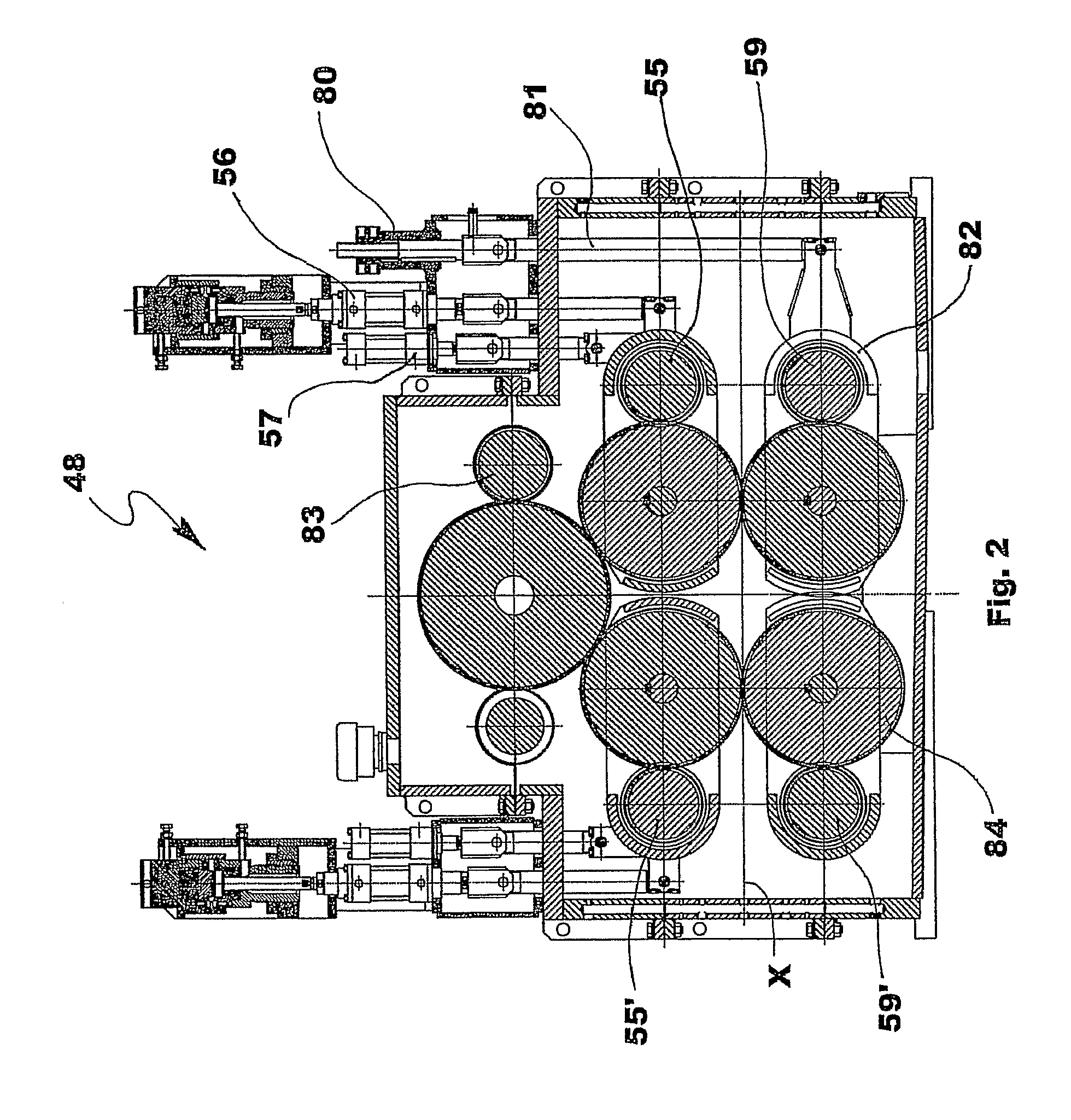Bar speed changing device
a technology of speed change and bar, which is applied in the direction of metal rolling, metal rolling stand, transportation and packaging, etc., can solve the problems of not being able to achieve the correct and repeatable bar unloading speed, excessive power consumption, and not being able to meet the specifications of the prior art with a 6 bar operating pressure, etc., and achieves considerable energy saving and less power.
- Summary
- Abstract
- Description
- Claims
- Application Information
AI Technical Summary
Benefits of technology
Problems solved by technology
Method used
Image
Examples
Embodiment Construction
[0033]With reference to the drawings, a bar processing plant is now described. Said plant comprises:[0034]a cutting-to-length shearing machine 45 with integrated deflector device;[0035]two deflector devices 46 and 47 that divert the bars towards four unloading lines;[0036]a four-way bar braking assembly, comprising four bar speed changers 48. For the sake of simplicity, in the following description reference is only made to one of the two functions of the speed changer, namely to that in which it is used as a brake, and it is simply called a bar braking device. The term bar braking device thus also refers to the case in which the bars are made to accelerate;[0037]two twin-channel rotating assemblies 49, i.e. four rotating drum channels 50, 51, 52, 53;[0038]a device with one or more conveyors 60, 61, 62, 63 to unload the bar sections.
[0039]The cutting-to-length shearing machine 45 advantageously, but not necessarily, cuts the bars coming from a rolling mill, which is not illustrated ...
PUM
| Property | Measurement | Unit |
|---|---|---|
| speed | aaaaa | aaaaa |
| operating pressure | aaaaa | aaaaa |
| time | aaaaa | aaaaa |
Abstract
Description
Claims
Application Information
 Login to View More
Login to View More - R&D
- Intellectual Property
- Life Sciences
- Materials
- Tech Scout
- Unparalleled Data Quality
- Higher Quality Content
- 60% Fewer Hallucinations
Browse by: Latest US Patents, China's latest patents, Technical Efficacy Thesaurus, Application Domain, Technology Topic, Popular Technical Reports.
© 2025 PatSnap. All rights reserved.Legal|Privacy policy|Modern Slavery Act Transparency Statement|Sitemap|About US| Contact US: help@patsnap.com



